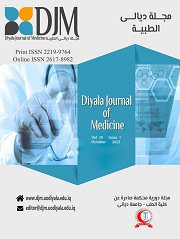Interplay Between Biometric Profiles, Biomarkers, Body Fat, and Bone Health: A Statistical and Machine Learning Approach
Main Article Content
Abstract
Background: Obesity and metabolic disorders are increasingly prevalent public health concerns. Excess adiposity, particularly visceral fat, is associated with metabolic dysfunction, whereas regional fat depots, such as gynoid fat, may confer protective benefits on skeletal integrity.
Objectives: This study aimed to examine the intricate relationship between biometric profiles, biochemical markers, body fat distribution, and bone health.
Patients and Methods: Data were obtained from the National Health and Nutrition Examination Survey (NHANES), including adult participants with complete measurements on body composition (total, visceral, and subcutaneous fat; BMI; waist circumference), biochemical markers (lipid profiles, fasting glucose, insulin, hormonal regulators), and bone health metrics (bone mineral density and content via DXA). Correlation and multivariate regression analyses were conducted to identify predictors among demographic, biometric, and biochemical variables. Machine learning techniques, specifically Random Forest Regression, were employed to enhance predictive modeling of fat indices and bone health outcomes.
Results: BMI and waist circumference emerged as robust predictors of total and visceral fat, with significant gender and age disparities noted. Women exhibited higher total and subcutaneous fat, whereas men demonstrated increased visceral fat. Biochemical markers, notably insulin and glucose, correlated strongly with adiposity indices. Furthermore, bone health was positively associated with BMI and specific biomarkers (testosterone, Creatinine phosphokinase (CPK) and negatively associated with Sex Hormone-Binding Globulin (SHBG) and Alkaline Phosphatases (ALP). Moderate to high predictive accuracy was observed for the machine learning models, confirming the supporting role of predictive analytics in understanding these relationships.
Conclusion: The combination of anthropometric measures, biochemical markers, fat and bone density, and machine learning offers a comprehensive understanding of their correlation. Such insights can inform the design of targeted clinical decision-making strategies and highlight the feasibility of using simple, non-invasive measurements to assess metabolic and skeletal risks.
Keywords: biometric profile, bone health, body fat, machine learning approach.
Downloads
Article Details

This work is licensed under a Creative Commons Attribution 4.0 International License.





